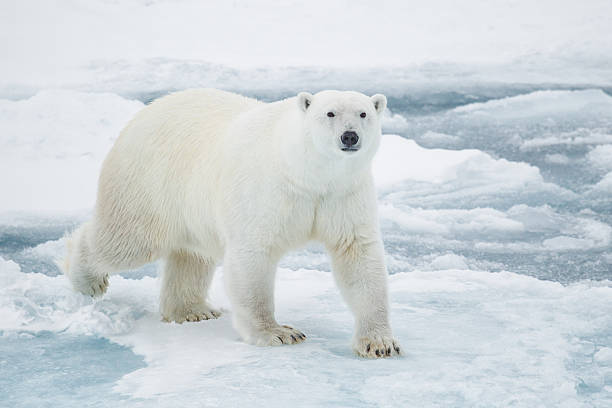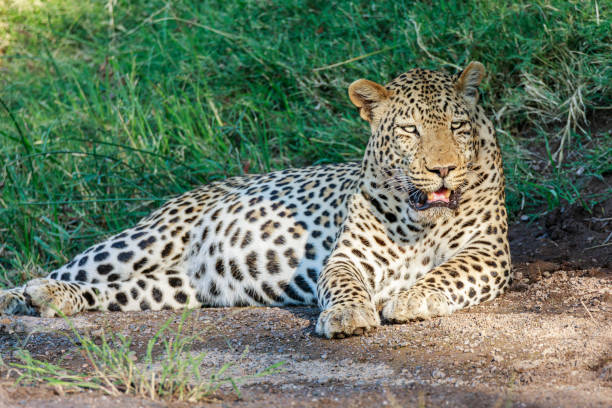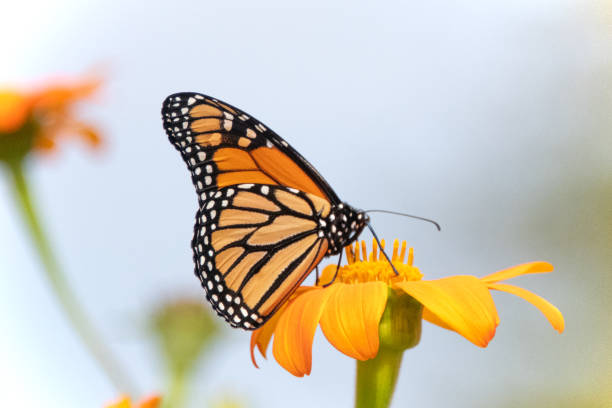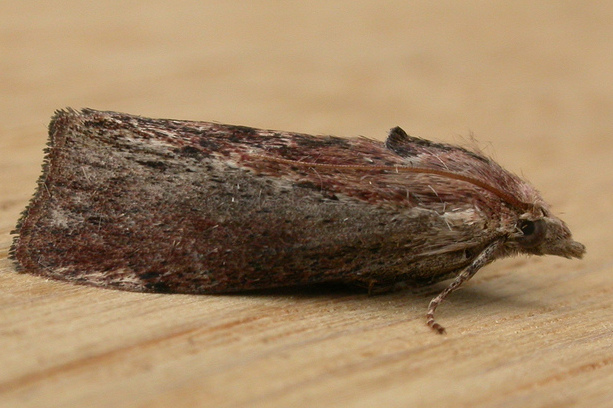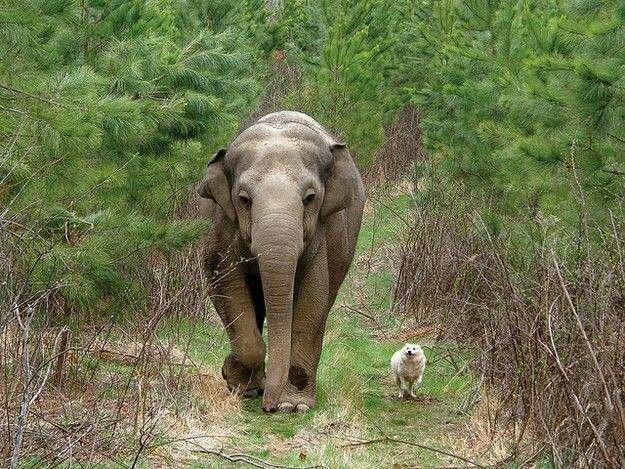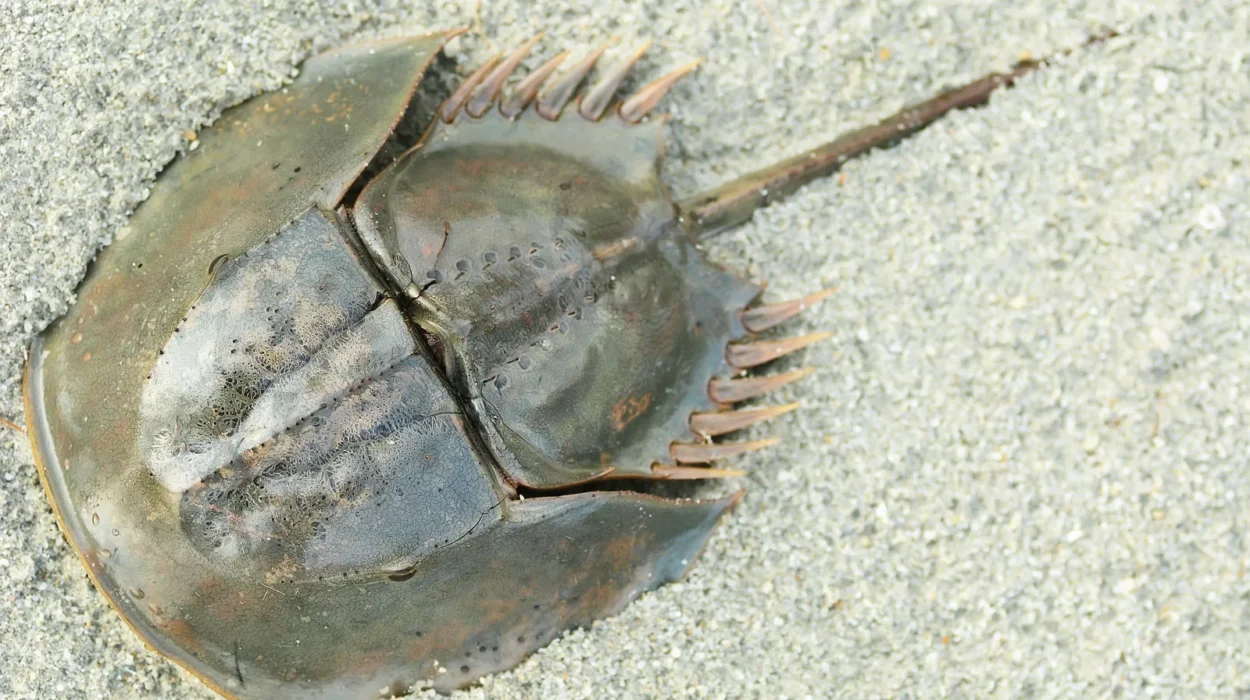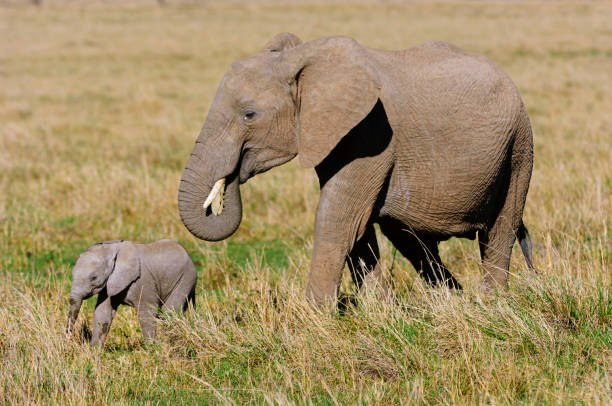At the edges of the Earth, where sunlight glitters off endless sheets of ice and the air burns with cold purity, life has carved out an existence that seems almost impossible. The polar regions — the Arctic in the north and the Antarctic in the south — have always been places of extremes. Temperatures plummet to unimaginable lows, winters swallow the sun, and yet life persists: powerful, beautiful, and exquisitely adapted to its frozen realm.
But the ice is melting.
What was once solid and eternal now drips into the rising seas. Glaciers crumble, ice floes vanish earlier each year, and the balance that sustained polar ecosystems for millennia is unraveling. Climate change is not a distant theory here — it is a daily reality, reshaping landscapes, food chains, and the fate of countless species.
These animals are the first to feel the heat of a world transformed. Their struggle is not just a story of biology, but of resilience, tragedy, and our shared responsibility to protect what remains. Here are ten of the most iconic polar species standing at the edge of survival — victims of a warming planet, and symbols of nature’s fading frost.
1. Polar Bear – The King Losing His Throne
The polar bear, the undisputed monarch of the Arctic, is perhaps the most recognizable victim of climate change. Towering over the ice at nearly ten feet tall and weighing up to 1,500 pounds, it embodies the strength and spirit of the frozen north. But even kings can fall when their kingdoms melt beneath them.
Polar bears rely entirely on sea ice to hunt seals — their primary food source. As global temperatures rise, the Arctic’s summer sea ice shrinks earlier and returns later each year, forcing bears to travel farther and expend more energy in search of food. Many become stranded on land, where they scavenge human garbage or starve waiting for the ice to return.
Scientists estimate that the global polar bear population could decline by more than two-thirds by the end of this century if current warming trends continue. Starving bears have already been found wandering near human settlements, exhausted and emaciated, their fur thin and their ribs showing — haunting reminders of an ecosystem unraveling.
The tragedy of the polar bear is not just its hunger, but its helplessness. These apex predators, built for endurance and ice, now face an enemy they cannot see or fight — a world growing too warm for their frozen existence.
2. Arctic Fox – The Silent Shadow Fading Away
The Arctic fox is a creature of quiet resilience. Its thick white fur blends perfectly into snow-covered tundra, a living ghost of the north. It can survive temperatures as low as -50°C and has evolved a metabolism that thrives in scarcity. But even this master of adaptation is now struggling against climate change.
As the Arctic warms, red foxes — larger, more aggressive, and less suited to the cold — are expanding northward, competing for territory and food. The shrinking snow cover also leaves the Arctic fox exposed to predators and reduces its hunting efficiency.
More critically, climate change disrupts the population cycles of lemmings, the fox’s primary prey. With fewer lemmings available due to unpredictable snow patterns and changing vegetation, the foxes face starvation, especially during long winters.
In Scandinavia and parts of Russia, conservationists have started supplemental feeding programs and breeding efforts to prevent local extinctions. But even these measures cannot stop the deeper crisis — that the Arctic itself, the very world these foxes are born to master, is slipping away.
3. Walrus – The Giant Without Ice
The walrus is the embodiment of Arctic might — a creature of immense power and surprising grace. With tusks up to three feet long and weighing nearly a ton, these social animals gather by the thousands on floating ice floes to rest, nurse their young, and dive for clams on the seafloor.
But as the sea ice melts, their world becomes perilous. Lacking ice platforms near feeding grounds, walruses are forced to haul out on land in massive numbers. These gatherings can turn deadly. When startled, panicked herds rush toward the water, trampling calves and crushing weaker individuals in the chaos.
Without ice, walruses must swim longer distances to find food — an exhausting task that leaves many unable to nurse their young properly. Scientists have observed increasing mortality among walrus calves, a sign of a population under severe stress.
The walrus, once a symbol of Arctic abundance, has become a symbol of loss. Its tusks now seem less a mark of power and more a desperate anchor to a vanishing world.
4. Emperor Penguin – The Royal Facing Extinction
In the vast emptiness of Antarctica, the emperor penguin stands as a monument to endurance. These regal birds march up to 100 kilometers across the ice to breed, their lives synchronized perfectly with the continent’s frozen rhythm. But climate change has disrupted that rhythm, and with it, their survival.
Emperor penguins depend on stable sea ice to raise their chicks. If the ice melts too early, before the chicks develop waterproof feathers, entire colonies can perish. In recent years, several breeding grounds in Antarctica’s Bellingshausen Sea and Weddell Sea have experienced catastrophic collapses, with chick survival dropping to nearly zero.
Warming also reduces the availability of krill — tiny shrimp-like creatures that penguins depend on for food. Krill populations are declining as sea ice, where they feed on algae, diminishes.
In 2022, the U.S. Fish and Wildlife Service officially listed the emperor penguin as a threatened species due to climate change. Without rapid global action, scientists predict that more than 98% of emperor penguin colonies could disappear by the year 2100.
Their haunting calls echo across the ice — songs of survival in a world that no longer keeps its promises.
5. Narwhal – The Unicorn of the Arctic in Peril
The narwhal, with its spiral tusk stretching up to ten feet, is one of nature’s most mysterious creations. Known as the “unicorn of the sea,” it has inspired legends for centuries. But beneath the waves of the Arctic, the narwhal’s reality is one of growing uncertainty.
These whales are exquisitely adapted to cold environments. They rely on sea ice to evade predators like killer whales and depend on predictable freeze-thaw cycles to access their feeding grounds. As warming accelerates, the ice becomes unstable, and the narwhals’ ancient migration patterns are thrown into chaos.
Their tusks, actually elongated teeth, are used to sense changes in their environment. But no sensory adaptation can prepare them for the shock of sudden meltwater floods, noise pollution from increased Arctic shipping, and the loss of ice refuges.
Narwhals are sensitive to disturbance. The roar of engines and sonar pulses from expanding shipping and oil exploration disrupt their communication and feeding behavior. In a world where the ice no longer shelters them, their mythical beauty may soon become a memory of what the Arctic once was.
6. Ringed Seal – The Hidden Victim Beneath the Ice
The ringed seal is small and elusive, spending much of its life beneath the Arctic sea ice. It is the polar bear’s primary prey and a vital link in the Arctic food web. But as ice vanishes, this delicate balance is collapsing.
Ringed seals give birth in snow caves on top of sea ice. These structures protect their pups from predators and freezing winds. When the snow layer is too thin — a frequent consequence of warmer temperatures — the caves collapse, exposing the pups to the elements and to hungry foxes and gulls.
Changes in ice cover also alter where seals can rest, molt, and feed. The loss of stable platforms forces them into open water, where they are more vulnerable to predators and human interference.
For centuries, the ringed seal thrived in the cold silence of the Arctic. Now, that silence is breaking — replaced by the sounds of cracking ice and the encroachment of human activity.
7. Adélie Penguin – The Vanishing Colonies of the Antarctic Peninsula
Among the icy cliffs and windswept beaches of Antarctica’s Peninsula, the Adélie penguin once thrived in colonies numbering millions. These lively, comical birds, with their tuxedo-like plumage and curious eyes, are icons of the southern continent. But their numbers are falling fast.
Unlike their emperor relatives, Adélies depend on sea ice for foraging. As warming accelerates along the Antarctic Peninsula — one of the fastest-warming regions on Earth — the ice retreats, reducing access to krill and fish. Many traditional breeding sites have collapsed, with some colonies losing more than 90% of their populations in just a few decades.
In contrast, gentoo penguins — a more temperate species — are moving southward into Adélie territory, outcompeting them for nesting grounds. The world of ice that once belonged to the Adélie is transforming into one that no longer fits its needs.
Each breeding season now carries uncertainty — will there be enough food, enough ice, enough time? The Adélie penguin’s story is not just ecological, but deeply emotional: a dance of life unraveling as the stage itself melts away.
8. Beluga Whale – The White Ghosts of the North
Known as the “canaries of the sea” for their melodic calls, beluga whales are among the most vocal and social marine mammals. Their white skin camouflages them perfectly against the sea ice — a landscape they have navigated for thousands of years. But that world is now breaking apart.
As the Arctic warms, belugas lose the icy protection that shields them from killer whales and human disturbance. The opening of new shipping routes through the melting Arctic exposes them to pollution, underwater noise, and collisions with vessels.
These sensitive whales communicate through complex sounds, and noise pollution interferes with their ability to navigate, hunt, and maintain social bonds. Melting permafrost also releases contaminants like mercury into the ocean, further threatening their health.
Belugas are creatures of connection — to each other, to the ice, and to the rhythm of frozen seas. As that rhythm falters, so does the song of the beluga, fading into the noise of a changing world.
9. Musk Ox – The Ancient Survivor on Thin Ice
The musk ox, shaggy and stoic, looks like a relic from the Ice Age — and in many ways, it is. For thousands of years, these massive grazers have survived on Arctic tundra, enduring storms and temperatures that would freeze nearly any other animal. But even they are not immune to a warming world.
Climate change brings warmer winters and heavier snowfalls that freeze into impenetrable layers of ice, making it nearly impossible for musk oxen to reach the grasses beneath. In years of “rain-on-snow” events, entire herds have been found dead, trapped by starvation.
Warmer temperatures also bring parasites and diseases previously unknown in the Arctic. Lungworms and bacterial infections now plague musk ox populations, weakening adults and killing calves.
The musk ox’s thick coat, once its greatest asset, has become a burden in a world where the cold is no longer constant. Once symbols of Arctic endurance, these majestic animals now face the most insidious of threats — a climate changing too fast for even time-tested strength to withstand.
10. Antarctic Krill – The Tiny Beating Heart of the Southern Ocean
At first glance, the Antarctic krill seems insignificant — a shrimp-like creature barely a few centimeters long. But beneath the icy waves, they form massive swarms that sustain the entire Antarctic food web. Penguins, seals, whales, and seabirds all depend on krill for survival. And now, krill themselves are disappearing.
Krill feed on algae that grow on the underside of sea ice. As the ice cover diminishes, so does the algae, leading to widespread declines in krill abundance. Studies show that Antarctic krill populations have fallen by up to 80% in some regions over the past four decades.
The loss of krill reverberates through the ecosystem. Whales go hungry, penguin chicks starve, and seals struggle to find enough nourishment. Compounding the problem, commercial fishing increasingly targets krill for use in fish oil and aquaculture feed, putting even greater pressure on already strained populations.
In the grand symphony of the Antarctic, krill are the heartbeat — tiny, tireless, and essential. Without them, the entire system falters, echoing the silent urgency of a planet out of balance.
A World on the Edge
The fate of these ten species — from the towering polar bear to the microscopic krill — is intertwined. Each is a thread in the fabric of polar life, and as the climate unravels, the entire tapestry begins to tear. The loss of ice is not just the loss of habitat; it is the unraveling of entire worlds.
Scientists warn that even small temperature increases have outsized effects in the polar regions. Melting permafrost releases more greenhouse gases, amplifying warming in a deadly feedback loop. The Arctic and Antarctic are no longer distant, isolated realms — they are mirrors, reflecting humanity’s impact on a planetary scale.
The Human Connection
For Indigenous communities of the Arctic, such as the Inuit, this crisis is deeply personal. They depend on polar ecosystems for food, culture, and identity. As ice routes vanish and animal migrations shift, their traditional knowledge — shaped over millennia — is being tested like never before.
And yet, these communities also embody resilience. Their voices call for respect, conservation, and a return to harmony with the environment — a wisdom the modern world desperately needs to heed.
Hope in the Cold
It is easy to feel despair when faced with the scale of loss. But there is still hope — and it lives in the courage of those who act. International agreements to reduce carbon emissions, protect marine reserves, and limit industrial exploitation in the Arctic and Antarctic are steps toward healing.
Every fraction of a degree of warming prevented can mean survival for a species. Every decision to reduce pollution or protect habitat ripples outward like a heartbeat under the ice.
The polar regions are not empty wildernesses — they are living, breathing worlds. To save them is to save a part of ourselves: the part that still remembers awe, reverence, and wonder.
The Final Echo of Ice
As the last great sheets of ice reflect the sunlight of a warming world, their meltwater carries more than frozen history — it carries a warning. The animals that once ruled these frozen realms now stand as sentinels at the frontier of climate change, their lives a measure of our choices.
If the polar bear vanishes, if the penguin’s song goes silent, if the ice retreats beyond return — it will not just be the end of an era for them. It will mark a turning point for all life on Earth.
To protect them is to preserve the poetry of the planet itself — the shimmer of light on snow, the whisper of wings over frozen seas, and the echo of survival in the heart of the cold. For even in the harshest places, life has always found a way. The question now is whether we will let it continue to do so.
